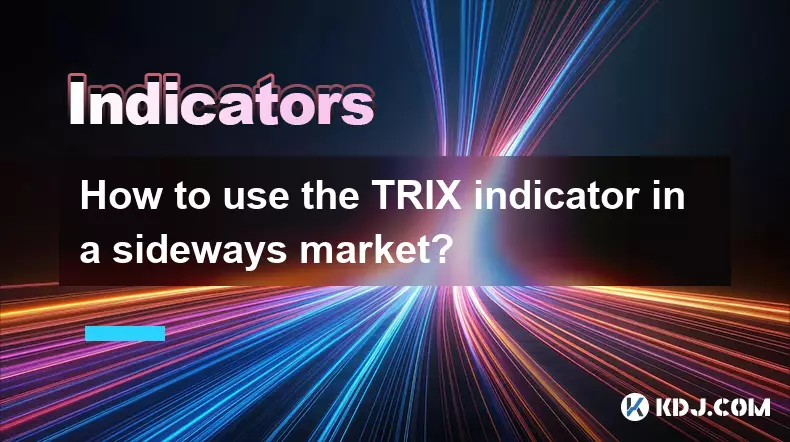-
 bitcoin
bitcoin $94896.319736 USD
-0.39% -
 ethereum
ethereum $3130.546781 USD
-0.60% -
 tether
tether $0.999368 USD
-0.10% -
 xrp
xrp $2.232415 USD
1.03% -
 bnb
bnb $931.833054 USD
0.53% -
 solana
solana $138.573946 USD
-0.08% -
 usd-coin
usd-coin $0.999844 USD
-0.08% -
 tron
tron $0.292320 USD
-0.61% -
 dogecoin
dogecoin $0.159558 USD
-1.12% -
 cardano
cardano $0.489320 USD
-1.89% -
 hyperliquid
hyperliquid $38.634250 USD
0.58% -
 zcash
zcash $700.952791 USD
3.30% -
 bitcoin-cash
bitcoin-cash $486.511218 USD
-3.00% -
 chainlink
chainlink $13.831174 USD
-1.13% -
 unus-sed-leo
unus-sed-leo $9.209054 USD
0.47%
A Guide to Scalping Ethereum (ETH) with the Exponential Moving Average (EMA)
Scalping in the Ethereum market leverages high volatility and liquidity, using tight stop-losses and EMA crossovers on 1-minute or 5-minute charts for quick entries and exits.
Nov 05, 2025 at 05:45 am

Understanding Scalping in the Ethereum Market
1. Scalping involves making numerous trades within a single day to capture small price movements. In the Ethereum market, this strategy thrives due to high liquidity and frequent volatility. Traders aim to enter and exit positions within minutes or even seconds, relying on technical precision rather than long-term fundamentals.
2. Ethereum’s 24/7 trading cycle across global exchanges provides continuous opportunities for scalpers. Unlike traditional markets with fixed hours, crypto allows traders to act immediately on breaking news, protocol upgrades, or whale movements that influence short-term price action.
3. Successful scalping demands strict discipline and risk management. Since profits per trade are minimal, losses must be tightly controlled. A stop-loss order is typically placed just below key support levels or recent swing lows to prevent large drawdowns.
4. The use of leverage amplifies both gains and risks. While some traders employ 5x to 10x leverage to boost returns on small moves, it also increases the chance of liquidation during sudden reversals, especially in low-liquidity periods.
5. Scalpers often focus on major trading pairs like ETH/USDT or ETH/BTC, where bid-ask spreads are narrow and order books are deep. These conditions reduce slippage and allow faster execution, which is critical when holding positions for under five minutes.
The Role of Exponential Moving Averages in Short-Term Trading
1. The Exponential Moving Average (EMA) gives more weight to recent prices, making it more responsive to new information compared to the Simple Moving Average (SMA). This sensitivity makes EMA ideal for detecting early shifts in momentum, a crucial factor in scalping.
2. Common EMA combinations used in ETH scalping include the 9-period and 21-period EMAs on 1-minute or 5-minute charts. When the 9 EMA crosses above the 21 EMA, it signals short-term bullish momentum; the reverse indicates bearish pressure.
3. Traders watch for price interactions with the EMA ribbon—a cluster of multiple EMAs—to assess trend strength. If ETH consistently trades above rising EMAs, it confirms an uptrend suitable for buy scalps. Conversely, trading below descending EMAs favors short entries.
4. Divergence between price and EMA slope can signal exhaustion. For instance, if ETH makes higher highs while the EMA flattens, upward momentum may be fading, prompting cautious entries or profit-taking.
5. Some scalpers overlay EMAs with volume indicators to confirm breakouts. A surge in volume as price crosses above the 9 EMA increases the likelihood of a sustained move, reducing false signals in choppy markets.
Executing Scalp Trades Using EMA Crossovers
1. A typical long setup occurs when the 9 EMA crosses above the 21 EMA on a 5-minute chart, accompanied by strong green candles and rising volume. Entry is taken at the close of the confirmation candle, with a stop-loss set below the most recent swing low.
2. For short scalps, the inverse applies: the 9 EMA crosses below the 21 EMA, red candles accelerate downward, and volume expands. The trade initiates at the close of the breakdown candle, targeting a quick drop before covering the position.
3. False breakouts are common in low-volume periods, so scalpers avoid trading during Asian session lulls unless significant news triggers volatility. High-impact events like Ethereum upgrade announcements or regulatory headlines often precede sharp moves ideal for EMA-based entries.
4. Position sizing is adjusted based on account risk—typically no more than 1% per trade. With tight stop-losses, even a series of losing trades won’t severely impact capital, allowing consistency over time.
5. Exit strategies vary: some traders take profit at 1.5x to 2x their risk, while others trail a micro-stop just below the latest EMA pullback. Scaling out—closing half the position at first target and letting the rest run—is another popular technique.
Common Challenges and How to Address Them
1. Whipsaws—rapid back-and-forth price movements—can trigger multiple losing trades during consolidation phases. To reduce exposure, scalpers switch to longer timeframes like the 15-minute chart to identify range boundaries before re-engaging on the 5-minute.
2. Exchange latency affects execution speed, particularly during high volatility. Using platforms with co-located servers or API-based bots ensures orders are filled at desired levels, minimizing slippage.
3. Overtrading is a psychological pitfall. After two or three consecutive wins, traders may chase every signal, ignoring confluence factors. Maintaining a checklist—such as requiring volume confirmation and alignment with higher timeframe trend—helps filter noise.
4. Network congestion on Ethereum itself can delay blockchain transactions, though this mainly impacts spot traders moving funds between wallets. Futures traders on centralized exchanges are largely insulated from this issue.
5. Indicator lag remains a core limitation of EMAs—they react to price, not predict it. Combining EMA crossovers with real-time order book analysis or depth charts improves timing, especially near key support/resistance zones.
Frequently Asked Questions
What timeframes work best for EMA-based ETH scalping?The 1-minute and 5-minute charts are most commonly used. The 1-minute offers faster signals but more noise, while the 5-minute provides cleaner EMA crossovers with slightly delayed entries.
Can EMA scalping be automated?Yes, many traders use bots that monitor EMA crossovers and execute trades via exchange APIs. These systems can include filters for volume, volatility, and trend direction to improve accuracy.
Is EMA scalping effective during low-volatility periods?It becomes less reliable when ETH trades in tight ranges. During such times, price often oscillates around EMAs without clear direction, leading to repeated false signals and losses.
How do funding rates affect EMA scalping in perpetual futures?High positive funding rates indicate leveraged long dominance, which can lead to short squeezes or abrupt reversals. Scalpers adjust position bias accordingly—favoring shorts when funding is excessively positive, for example.
Disclaimer:info@kdj.com
The information provided is not trading advice. kdj.com does not assume any responsibility for any investments made based on the information provided in this article. Cryptocurrencies are highly volatile and it is highly recommended that you invest with caution after thorough research!
If you believe that the content used on this website infringes your copyright, please contact us immediately (info@kdj.com) and we will delete it promptly.
- NIGHT Mining Update: Key Metrics and Trading Opportunities
- 2025-11-17 17:30:01
- Crypto Presales in November: Unveiling the Best Deals and Hidden Gems
- 2025-11-17 17:15:01
- Telcoin (TEL) Price Prediction: Futures Activity Hints at Volatility
- 2025-11-17 18:10:01
- LivLive, TRON, and the Crypto Breakout: What's the Buzz in 2025?
- 2025-11-17 17:45:01
- Pi Network, Coin Mapping, and the Surge Towards Mainnet: What's the Buzz?
- 2025-11-17 18:15:01
- Coining the Future: Direction and Writing in the Age of Crypto
- 2025-11-17 17:30:01
Related knowledge

What's the best way to learn the TRIX indicator?
Nov 10,2025 at 12:39pm
Understanding the Basics of the TRIX Indicator1. The TRIX (Triple Exponential Average) indicator is a momentum oscillator designed to filter out short...

How to identify trend exhaustion with the TRIX indicator?
Nov 15,2025 at 04:20pm
Decentralized Exchanges Gain Momentum in 20241. Decentralized exchanges (DEXs) have seen a significant rise in trading volume, surpassing several cent...

How do professional traders use the TRIX indicator?
Nov 06,2025 at 04:40pm
Understanding the TRIX Indicator in Crypto TradingThe TRIX (Triple Exponential Average) indicator is a momentum oscillator used by professional trader...

Can I use the TRIX indicator on my mobile trading app?
Nov 07,2025 at 07:40pm
The TRIX indicator, a momentum oscillator designed to filter out short-term fluctuations and highlight long-term trends, has become increasingly popul...

What is the TRIX indicator in simple terms for beginners?
Nov 17,2025 at 03:59am
Understanding the TRIX Indicator for New TradersThe TRIX indicator, short for Triple Exponential Average, is a momentum oscillator used in technical a...

How to use the TRIX indicator in a sideways market?
Nov 10,2025 at 03:00pm
Bitcoin’s Role in Decentralized Finance Evolution1. Bitcoin remains the cornerstone of decentralized finance, serving as both a store of value and a b...

What's the best way to learn the TRIX indicator?
Nov 10,2025 at 12:39pm
Understanding the Basics of the TRIX Indicator1. The TRIX (Triple Exponential Average) indicator is a momentum oscillator designed to filter out short...

How to identify trend exhaustion with the TRIX indicator?
Nov 15,2025 at 04:20pm
Decentralized Exchanges Gain Momentum in 20241. Decentralized exchanges (DEXs) have seen a significant rise in trading volume, surpassing several cent...

How do professional traders use the TRIX indicator?
Nov 06,2025 at 04:40pm
Understanding the TRIX Indicator in Crypto TradingThe TRIX (Triple Exponential Average) indicator is a momentum oscillator used by professional trader...

Can I use the TRIX indicator on my mobile trading app?
Nov 07,2025 at 07:40pm
The TRIX indicator, a momentum oscillator designed to filter out short-term fluctuations and highlight long-term trends, has become increasingly popul...

What is the TRIX indicator in simple terms for beginners?
Nov 17,2025 at 03:59am
Understanding the TRIX Indicator for New TradersThe TRIX indicator, short for Triple Exponential Average, is a momentum oscillator used in technical a...

How to use the TRIX indicator in a sideways market?
Nov 10,2025 at 03:00pm
Bitcoin’s Role in Decentralized Finance Evolution1. Bitcoin remains the cornerstone of decentralized finance, serving as both a store of value and a b...
See all articles










































































